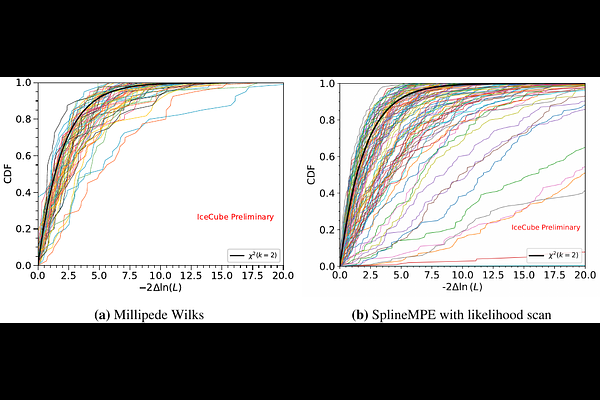Improvements in the Reconstruction of IceCube Realtime Alerts

Improvements in the Reconstruction of IceCube Realtime Alerts
Giacomo Sommani for the IceCube Collaboration, Tianlu Yuan for the IceCube Collaboration
AbstractIn 2016, the IceCube Neutrino Observatory launched its realtime program. When a neutrino candidate of likely astrophysical origin is detected, a public alert is issued, typically within one minute. These alerts allow the astrophysical community to follow up on the region of the sky where the neutrino likely originated. Initially, the system issued around six track-signature alerts per year, with a highlight being IceCube-170922A, which was later associated with the flaring blazar TXS 0506+056. Since 2019, IceCube has expanded the selection criteria for neutrino candidates, increasing the track alert rate to around 30 per year with additional alerts for cascade signatures of probable astrophysical origin implemented in 2020. This work describes several improvements in the reconstruction of track alerts, which were introduced into the realtime stream in 2024, and details the two algorithms that are alternately used for reconstruction, depending on the reconstructed muon energy. The improvements result in more precise directional localizations, with a factor of 5 (4) reduction in the 50% (90%) contour area. Systematic errors affecting the reconstructions, such as the ice model or the geometry of the detector, have also been investigated to ensure statistical coverage. In addition to its application in the realtime stream, the improvements described here are also being applied to historical alerts with an updated catalog of track alerts forthcoming.